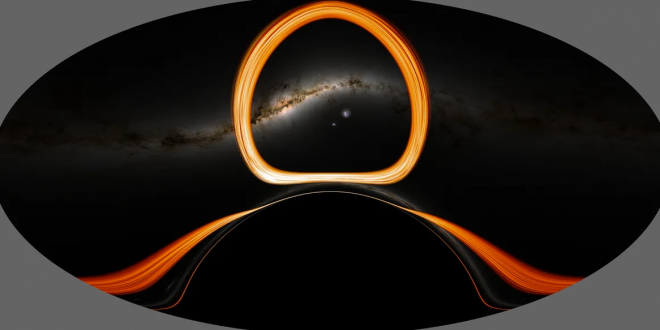If you have ever fantasized about traveling into a black hole but are deterred by the prospect of your body being stretched into plasma (a phenomenon known as spaghettification), NASA offers a solution. Experience a captivating 360° visualization that depicts the journey around a black hole, culminating in the moment of crossing the event horizon.
The event horizon of a black hole represents the boundary beyond which there is no possibility of escape. The point of no return. The region acts as a boundary that isolates the black hole from the rest of the universe. Once an object surpasses that boundary, no form of energy, including light, can evade the gravitational attraction exerted by the black hole. With the aid of a NASA supercomputer, it is now feasible to visualize the experience of navigating or descending into a black hole.
“Many people frequently inquire about this, and by simulating these complex and abstract processes, I am able to establish a connection between the mathematical principles of relativity and their tangible effects in the physical universe,” stated astrophysicist Jeremy Schnittman at NASA’s Goddard Space Flight Center, the creator of these visualizations.
“I conducted simulations of two distinct scenarios. In the first scenario, a camera, representing a bold astronaut, narrowly avoids the event horizon and is propelled back out. In the second scenario, the camera crosses the boundary, resulting in its inevitable fate.”
Schnittman said, “Most people would choose to fall into a supermassive black hole.” Stellar-mass black holes have event horizons that are much smaller and stronger tidal forces that can tear apart objects coming toward them before they reach the horizon. These black holes can hold up to 30 solar masses of matter.
In this second simulation, the camera gets closer to the supermassive black hole and falls toward it before it can get away.
Schnittman pointed out that things could get even worse. “Were the black hole to spin quickly like the one in the 2014 movie Interstellar, she would come back many years younger than her shipmates.”
These pictures help bring some of the strange things about black holes to life because they are so interesting and complicated.
 Tech Gadget Central Latest Tech News and Reviews
Tech Gadget Central Latest Tech News and Reviews




